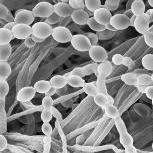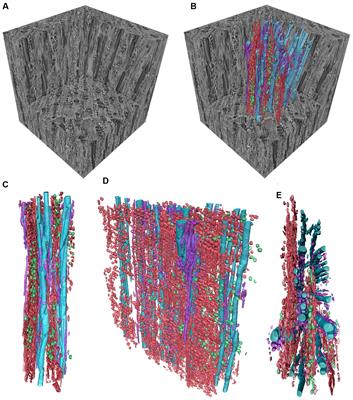-
Posts
188 -
Joined
-
Last visited
Content Type
Profiles
Forums
Classifieds
Tip Site Directory
Blogs
Articles
News
Arborist Reviews
Arbtalk Knot Guide
Gallery
Store
Calendar
Freelancers directory
Posts posted by Tommy Hutchinson
-
-
I survey trees on the railway, big trees get recorded and if deemed safe a re-inspection 1,2,3,4, years and so on is suggested. But some stretches of line will be inspected on a yearly bases...
There are literally 10's of thousands of big trees within falling distance of the rail, why on earth would you fell them all because they will grow old and die? This is firstly just want on destruction, secondly not practical and thirdly not sound arboricultural practice. Trees get old and die yes, but you phase manage them out of the tree stock. And of course the railway surveys have less options because crown reductions will rarely be undertaken, it's fell or keep, but I certainly see lots of large healthy trees next to the rail which have a long life ahead and are monitored.
-
 3
3
-
-
5 minutes ago, benedmonds said:
A report is not going to do anything but decrease their bank balance. It is a big tree next to a train line. It doesn't need work doing now.. but it will do one day.
No survey can guarantee the tree is 100% safe. We all have some caveat in our surveys saying "trees are living creatures etc etc..."
Yes they could keep putting the problem off, pay for annual surveys and hope the tree outlives them..
There's thousands of big trees next to the railway, so what?
-
On 15/01/2020 at 17:18, benedmonds said:
No-one will buy the house, it has a massive tree that will cost £100,000s to remove...
My original advice was do nothing (inspect), but the client wants to do something and the problem is not going to go away if they do nothing. The tree could outlive us all but someone will have to deal with it sometime...
What's the client's problem with the tree?
Why not get a professional arboricultural report done? May that will ease their worries, what ever they may be ^
-
Yes, some good one's in there. I particularly like this one:
'The tree is a fountain of the forest (Rayner 1998) moving ground water to the clouds.'
-
 3
3
-
-
-
What I'm saying is, what's the point?! Just tell the owner the tree is healthy and no action needs to be taken, re inspect in 2 years for example...
-
Right, but the owner wants 'something' done?
-
What's wrong with the tree?
-
 2
2
-
-
The pictures showing the mycelium penetrating the epidermis are insane/cool!
-
 1
1
-
-
Just now, Gary Prentice said:
Have you read Daltontrees microscope thread?
Here's another one, Light and scanning electron microscopy studies of the early
infection stages of Hymenoscyphus pseudoalbidus on Fraxinus excelsiorNo, I don't think I've seen it.
I'll check this study now.
-
Wood_decay_under_the_microscope - Francis Schwarze
https://www.researchgate.net/publication/229077882_Wood_decay_under_the_microscope
-
 1
1
-
-
Just now, Gary Prentice said:
If it helps, Frank Rinn is very approachable. I contacted Rinntech for some literature for my own research and he personally sent me a raft of literature (some in German
 )
)
Arb has and is constantly evolving, the problem is the depth of study needed (physiology/biology/chemistry/mycology/soil sciences) to even begin to understand trees. Just food for thought, we're in 2020 and still arguing something as 'basic' as how a branch union is formed! Consider that we put a man on the moon 50+ yrs ago but with all the engineering technology available we can't, AFAIK, reproduce that branch union
 . Can you imagine how buildings would change with a lever arm (not cantilevered) of the same proportions that trees naturally create?
. Can you imagine how buildings would change with a lever arm (not cantilevered) of the same proportions that trees naturally create?
Yes, Frank is interesting. I've been to a few his talks. I'd have a problem reading in German though... :-)
Yep, we know very little! At this moment in time I feel a lot findings within the realm of trees are making us ask more questions... However, there are some answers!
Biomimicary has helped civilisation a lot and the genius of nature is a wonderful thing. But, not sure how we would construct buildings with a xylem and phloem matrix. ?
-
Just now, Gary Prentice said:
I'd say that less knowledgeable arbs having been using the T/r ratio in the mistaken belief that it's absolute.
When it was originally published Gruber (?) and others raised doubts on the statistics used to verify the hypothesis and that crown size/sail area/shelter was absent from the equation.
As a starting point (open or closed cylinder aside) it's something to consider - along with H/D ratio, crown exposure, crown size and density and a raft of other visual assessments, towards a determination of failure potential. It's always going to be unwise to grasp a one size fits all formula when making decisions about a living organism.
I studied, in depth, almost all of the assessment methods available in collage (L6) and to be blunt, they all have faults. Even sonic tomography (sorry Steve
 ) only gives a picture of the interior across the plane of the test. At best I think that all we can realistically do is to make an assessment to the best of our ability using whatever/all of tools/methods/knowledge/experience that we have to hand (or that the client can afford/the tree merits)
) only gives a picture of the interior across the plane of the test. At best I think that all we can realistically do is to make an assessment to the best of our ability using whatever/all of tools/methods/knowledge/experience that we have to hand (or that the client can afford/the tree merits)
Yes Gruber, and now a few others.
I agree they all have limitations, some more so than others. Especially when you start to reed extensively into the science (if any) and methodologies behind them.
Arboriculture just needs to evolve a bit more, it's happening but it's slow because it's a very niche subject, but becoming more credible and known. This will hopefully mean more research funding thus progression(s).
-
FOUNDATIONS OF TREE RISK ANALYSIS:
Use of the t/Rratio to Evaluate Trunk Failure Potentialhttps://www.urbanforestanalytics.com/sites/default/files/pdf/bond_tR.pdf
-
More reading:
Shell-wall thickness and breaking safety
of mature treeshttp://ps.ictinternational.com/content/uploads/2014/03/Shell-Wall-Thickness-and-Breaking.pdf
-
On 11/01/2020 at 10:26, Gary Prentice said:
Like most tree related 'rules', T/r is just a starting point in an assessment and shouldn't be followed blindly. Lots of veteran trees around with small crowns and a T/r of 0.1 that have stood for decades or longer.
The only time it should be a starting point is when a tree has perfect cylindrical residual wall which is closed. And how many hollowing trees have these features?!
Arborists have been using the t/R ratio for decades unbeknown to the lack of scientific credibility and its near uselessness for predicting tree failure.
-
-
And some more:
Overview of techniques and procedures for assessing the probability of
tree failure - David Lonsdale, -
Some more reading:
Why t/R Ratios Are Not Very Helpful
https://www.validtreerisk.com/resources/Documents/Why%20tR%20Ratios%20Don't%20Help%20v1.1-2019.pdf
-
The Visual Tree Assessment One-Third Rule: Frequently Applied, but Mostly Irrelevant
-
 2
2
-
-
Look how cool this is:
Figure 1.Why spatial scales matter. To illustrate the situation that most microbes find themselves on leaf surfaces, assume a human subject on the island of Trinidad, which has similar proportions to a human as a bean leaf to a bacterium. Assuming that the human cannot move, has no vision, nor sense of hearing and is left only with its sense of touch and sense of smell, the immediate surrounding becomes vitally important. In other words, that human will not be able to perceive any other part of the island. This is comparable to how individual single‐celled microbes perceive a leaf. Without sufficient amounts of water, free movement of bacteria is restricted and they only perceive signals, such as sugars, amino acids or volatiles, diffusing to their occupied site. Thereby, the microhabitat conditions drive the experience and behaviour of individual bacteria.-
 2
2
-
-
The Pyhllosphere! :-)
'The surface area of the phyllosphere is approximately twice as great as the land surface area, and this environment provides a habitat for numerous microorganisms that colonize leaf surfaces (where they mostly form aggregates) and the spaces inside leaves.'
https://nph.onlinelibrary.wiley.com/doi/full/10.1111/nph.15054
-
What's interesting is that fungi are allways present, they never will not be. They're just waiting for the environment to change so they can switch from latent to active. I think trees are more complex than we give them credit for. Just look into the numbers of life that live in their leaves (phyllosphere), it's insane!
Ultimately arborsits would like to know the full extent of the structural damage caused by fungi. We're getting closer and an arborists approach must be holistic. However, not everyone has all the detection equipment to use to help assist a more holistic and accurate decision, this can, and still does mean premature deaths of trees.
-
The Parenchyma of Secondary Xylem and Its Critical Role in Tree Defense against Fungal Decay in Relation to the CODIT Model
 Frontiers | The Parenchyma of Secondary Xylem and Its Critical Role in Tree Defense against Fungal Decay in Relation to the CODIT Model | Plant Science
WWW.FRONTIERSIN.ORG
Frontiers | The Parenchyma of Secondary Xylem and Its Critical Role in Tree Defense against Fungal Decay in Relation to the CODIT Model | Plant Science
WWW.FRONTIERSIN.ORG
This review examines the roles that radial and axial parenchyma (RAP) plays against fungal pathogens in the secondary xylem of wood within the context of the CODIT...





.thumb.jpg.a37bc17fcd9a826b98b365fb3a9794b6.jpg)



I am looking for tree work opportunity around W-s-M, Somerset
in Employment
Posted
Hi Medlar,
Try Hi-Line contractors south west:
Cheers
Tommy